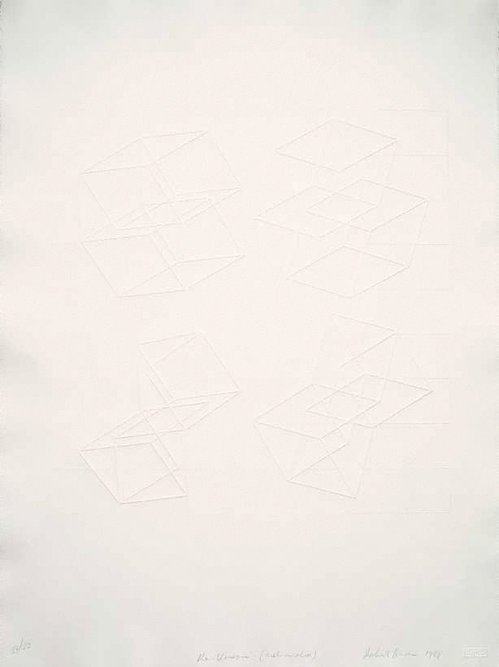Robert Owen
Australia
Born: Sydney, New South Wales, Australia 29 Jun 1937
Biography
The work that Australian artist Robert Owen has produced over half a century has spanned painting, drawing and photography as well as sculpture and installation, including public art on a monumental scale. Characterised by diverse materials and approaches, it is linked through his interest in light, colour and space.
His art has ranged from constructivist works to conceptually-driven site-specific installations, with his gallery practice eventually dividing into two closely interrelated directions: geometrically speculative sculptures and abstract paintings in which colours are structured through the discipline of the grid, such as the masterwork Cadence #1 (a short span of time), in the Art Gallery of NSW collection. A highly imaginative and even intuitive response to logic informs both strands.
Owen has called his art a ‘science of consciousness’: a mathematical exploration of form and structure is paired with poetic, meditative thought.
Born in Sydney on 29 June 1937, Owen was raised in Wagga Wagga in rural New South Wales. After finishing his national service at 18, he moved to Sydney, where his neighbours were the artists Francis J Broadhurst and Irene Broadhurst, who were a significant influence. He studied sculpture at the National Art School under Lyndon Dadswell.
After graduating with honours, Owen travelled to Europe in 1962. ‘Along the way, I saw this amazing new world and colours of the East – Indonesia, Singapore, Bombay – then through the Suez,’ he recalled in a 2004 interview. He spent three years living on the Greek island of Hydra, where he was part of an expat community that included Australian writers George Johnston and Charmian Clift, Canadian poet and songwriter Leonard Cohen and American poet Jack Hirschman. Along with the Aegean light and Greek mythology and culture, his encounters with Cycladic sculpture, Byzantine icons, Turkish mosques and Giotto’s Scrovegni chapel in Padua had a profound impact on his art, as did his reading in philosophy.
In 1966, Owen moved to London, where he continued his explorations into colour and light, inspired by the effects of a solar eclipse, and became involved with constructivists Anthony Hill, John Ernest and Gillian Wise.
Owen returned to Sydney in 1975, and in 1978 represented Australia at the Venice Biennale, along with Ken Unsworth and John Davis. He moved to Melbourne in 1988, where he was associate professor and head of sculpture at RMIT University until 2001.
Owen has exhibited widely since the 1960s in Australia and overseas but since the 1980s he has become increasingly known for his public art – including Vessel, commissioned for the Chiba Exhibition Centre in Japan in 1988, and Discobolus, commissioned for the Sydney 2000 Olympic Games – and collaborations on architectural and infrastructure projects, such as the Webb Bridge (2003) and Craigeburn bypass (2006) in Melbourne and the Gawler bypass arts project (2011) in South Australia.
Over his career Owen has served on the boards of organisations including Artspace, the Biennale of Sydney and Australian Sculpture Triennial. In 2003, he received an Australian Council Emeritus Award for lifelong service to the visual arts. In 2004, the Art Gallery of NSW presented the exhibition Robert Owen: different lights cast different shadows – the second Balnaves Foundation Sculpture Project. Owen’s work is represented in private and public collections internationally including the Museum of Modern Art, New York, the British Museum, London and the Art Gallery of NSW.







